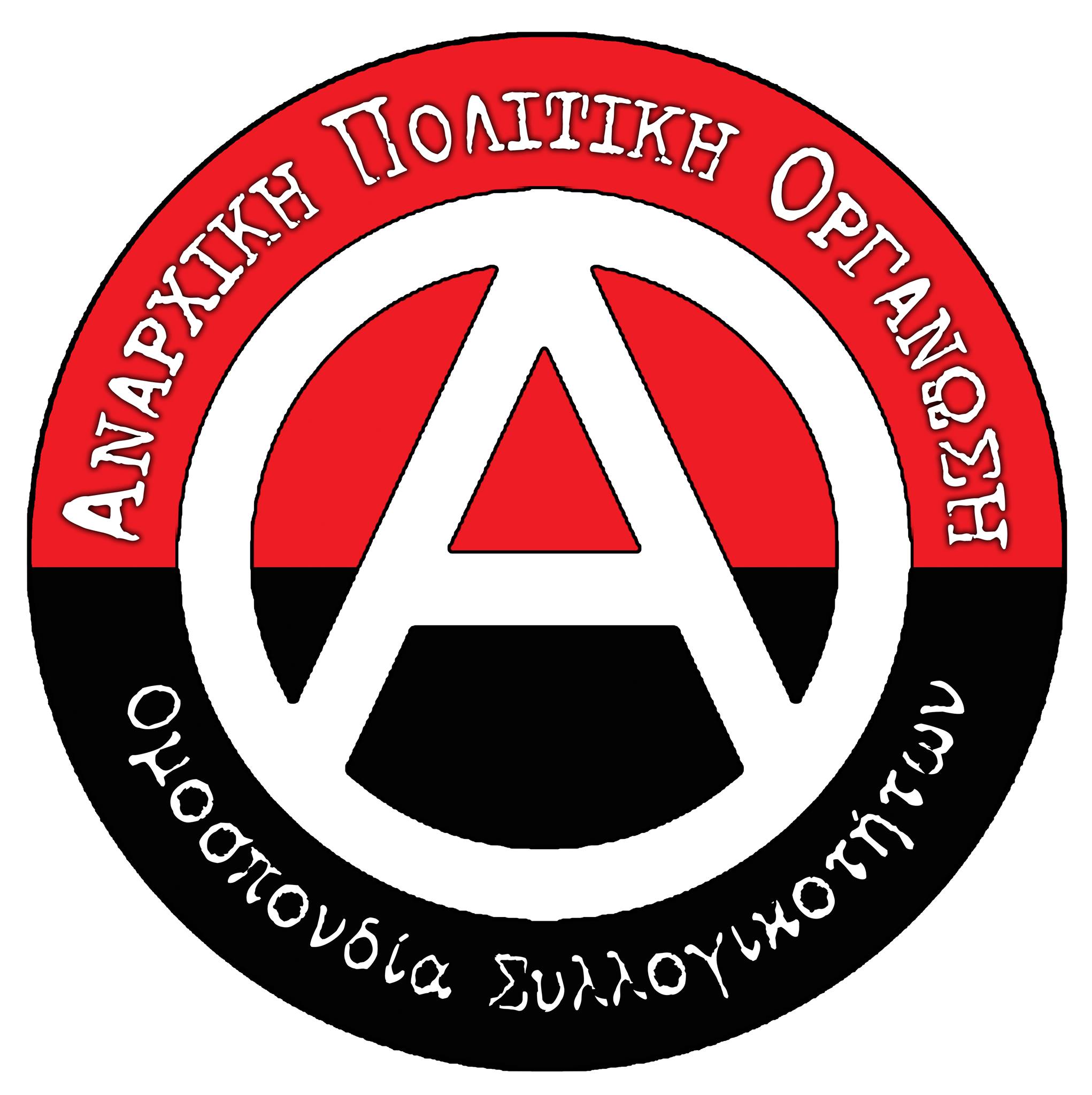INTERVIEW WITH THE COMRADES OF THE REVOLUTIONARY ABOLITIONIST MOVEMENT – NYC IN THE USA ABOUT THE SOCIAL UPRISING THAT BROKE OUT AFTER THE MURDER OF GEORGE FLOYD
1. A short description of the beginning of the revolt in response to the murder of George Floyd. Based on the fact that many different social groups from below (black and white youth, workers, unemployed, immigrants) participate massively in it, which are its specific characteristics?
The beginning of the uprisings marked a historic moment in the US. It was a complete cultural shift from below, as you say, where people found their power against the police and acted firmly and unrelentingly against the police and icons of capitalism. It was a movement particularly driven by black and brown youth, who disproportionately feel the wrath of the armed forces. It was unapologetic and passionate. In New York, to see in the neighborhoods kids who had been directly targeted, harassed, beaten, and family members killed, directly confronting without fear, the very police who had done these things, was an incredible sight.
The police were using tactics to quell the uprisings that typically work at demonstrations: beatings, snatch and grab arrests, dragging people to the ground. But the youth weren’t stopped! They kept laughing and coming back to attack over and over again. In New York there are nearly 40,000 active police with military grade equipment and surveillance. Despite the inequality of the forces battling each other, the fear on the faces of the police was clear. They were panicked and shouting to each other to retreat!
I think from city to city, people were inspiring each other with each act of bravery. It was the burning of the 3rd precinct in Minneapolis and chasing the pigs out, that really showed people in other cities that they had the power to do the same. As people in NYC rose up and were attacking pigs, burning dozens of their cars and vans, and looting the most expensive stores in Midtown Manhattan, people in other cities saw possibilities where they were at.
The feeling in the streets was that something had fundamentally changed and people were not going to take it anymore. To our happiness and disbelief, there was extremely broad support for the most radical actions of the streets. It seems with this uprising that something has broken in society here, and though it may take time and further actions and organizing, with this deep layer of society wanting a change that the state can’t possibly make, it will not be possible for the liberals to push everyone back to oppressive normality, especially now that the youth have seen how easy it is to break the grip of the police.
2. Which was the social and political situation before the revolt broke out and how did the pandemic and its anti-social management by the state impacted on the outburst of social rage?
The police force, like the entire United States, is a hold-over from the slavery era. The treatment of and attitude towards black and brown populations reflects this. The prison system is essentially a modern day plantation rife with free labor, unanswered executions and racist degradation, and to the court system, the main purpose of which is to feed black and brown children into the prisons so that they are caught in a web of state control from an early age. On top of this people have to deal with casual day-to-day encounters with the police people in the form of constant harassment, violence, and degradation.
It is yet another affront to humanity that Tump intentionally dismissed the seriousness of the COVID-19 crisis, leading to so many unnecessary deaths. Here are were no preparations whatsoever, even though there was advance notice that the crisis was coming. The US didn’t take the disease seriously so at the outbreak of the crisis, the Center for Disease Control was advising people not to wear masks. Additionally in New York City, where our chapter is based, the city was shut down very quickly and without preparation, so many people were fired from their jobs, and there was no financial help of any significance, no halt on rent and utility payments, and no help with food. Because the city was completely unprepared, many people died.
People unnecessarily lost loved ones, got sick, and were dealing with hunger and alienation. The psychological weight of the crisis was very heavy. So many people were dying that they had to put refrigerated trucks outside hospitals to store the bodies. Workers attested to carrying the bodies of their neighbors and friends, identified by only a number, into and out of the trucks. People who worked in hospitals didn’t have protective gear and there was a massive shortage of ventilators and hospital supplies. Poor communities were disproportionately effected because many people did not have the luxury of staying home. They had to work. This horror was clearly a result of the state’s unwillingness to help people.
At the same time, COVID-19 became an excuse for the state to further crack down on people it normally oppresses. There were many highly publicized beatings of black youth for not wearing masks and many, many more that were not publicized. Police became even more aggressive in the projects and black and brown communities. So not only were people suffering from sickness and death because of the city and federal governments, but they were also being hounded in their own neighborhoods.
3. Which are the forms of resistance and organization that the anarchists promote within the revolt and how do they confront the ideological and repressive campaign of the US state against the revolters?
Anarchists and antifascists participated from the beginning of these rebellions. The movement has explicitly focused on policing, prisons and its appendages for quite some time now. So this moment of rebellion is very special for us.
Just to be clear: this wasn’t an uprising sparked by anarchists. The rebellion is driven by black youth who are tired of being dehumanized and murdered.
The wonderful thing about these uprisings is that usually it is the anarchists who are out in front doing the most radical actions, but this time, it was the youth who were leading the charge! We were very excited to see that people had arrived at this point and that we were all on the same page together. This meant that anarchists could support others and do their activities in the midst of many who were also doing the same – it was a joyous meeting and culmination in the streets! We were altogether against the pigs, peace police, and with an attitude of supporting militants and street justice.
Things are quieter now in New York while militant actions still continue in other places, but the methods used to quiet things down make it clear that it is an unstable quiet. The state used the baton and also is trying to appropriate the momentum towards its own goals. The intention of the liberal media during the uprisings was to reel people back into a version of civil society where we continue to function as before, but with some small reforms to the system. Their coverage predominantly vilified looters and anarchists, and attributed the ‘violence’ to people who wanted to hijack the movement. The Democrats are trying to move into a position where they can use the demonstrations as leverage in their ongoing negotiations with the right. Right-wing media outlets vilify everyone and blame the unrest on the Democrats. All the mainstream media is now launching an anti-black campaign where they blast out every small incident involving a black person in order to justify the repressive hand of the police. They think they are clever, but they are just confirming why it all needs to be destroyed.
However, during this quiet period, we see that it is our duty to prepare to both shore up our infrastructure, organizing and give support to our political prisoners, many of whom are facing obscene amounts of jail time. We are preparing for the next wave of uprisings but also see an impending economic crisis on the horizon due to COVID-19. So we are trying to build means for sustaining and supporting our communities. Our goal is to help to turn these groups and infrastructure into revolutionary bodies. We were in contact with comrades in Chile who were advising us on how neighborhood councils were being developed during the uprisings there. We are in a far less advanced situation here politically, but we must build now and build well for the future.
4. The revolt in the US is an event of global reach. To what extend do you think it will affect the political and social situation in the US? What are your thoughts for the development of the anarchist struggle?
It is our dream to see the United States crumble for the good of the people here, and abroad.
It is interesting that these uprisings have not only shown cracks within American society, but also in the Federal Government itself. After people in Minneapolis beat the National Guard back, Trump declared he would bring in the military, but the military publicly rejected this. Both economically and in terms of the unity of the power structure, the US is weak right now. And even better, many in positions of power don’t understand its weakness on the global stage. This is definitely to our advantage. It is interesting to think that their ignorance and self-centeredness will be their downfall. The US lost in Vietnam in part because it underestimated its opponent and overestimated its abilities. Building solidly within our communities, building our ties and international networks, and keeping these relationships close will allow us to be able to operate against an opponent that primarily relies on its perception of being impervious.
However there still is a large amount of power the US possesses in terms of resources and arms and anything that diminishes that power will help in the overall struggle. Around the world the most important thing for anarchists to do is to intensify political and economic pressure on the US. Target anything and everything that makes the United States function and makes it powerful. The weaker the US gets, the better it is for us here and for people around the world in general. Additionally, any act of solidarity gives strength to those in the opposition here.
We also hope to see anarchists around the world advancing their own movements and struggles further and building powerful revolutionary communities. The more we grow here and abroad, the more resources we all collectively have and the better we can work to dismantle global systems of domination.
Meanwhile here, our goal is to empower those feeling the discontent which inspired the uprising to begin with; targeting local racism, the police, and other appendages of domination and exploitation. Something has fundamentally changed in the power dynamic here, and it has changed inside those who once lived in fear. This revolutionary power is something we can build on towards the future.
Revolutionary Abolitionist Movement – NYC




![[gr, eng] Παύση κάθε δίωξης του αναρχικού Libre Flot](https://apo.squathost.com/wp-content/uploads/2023/10/banner_flot-218x150.jpg)

